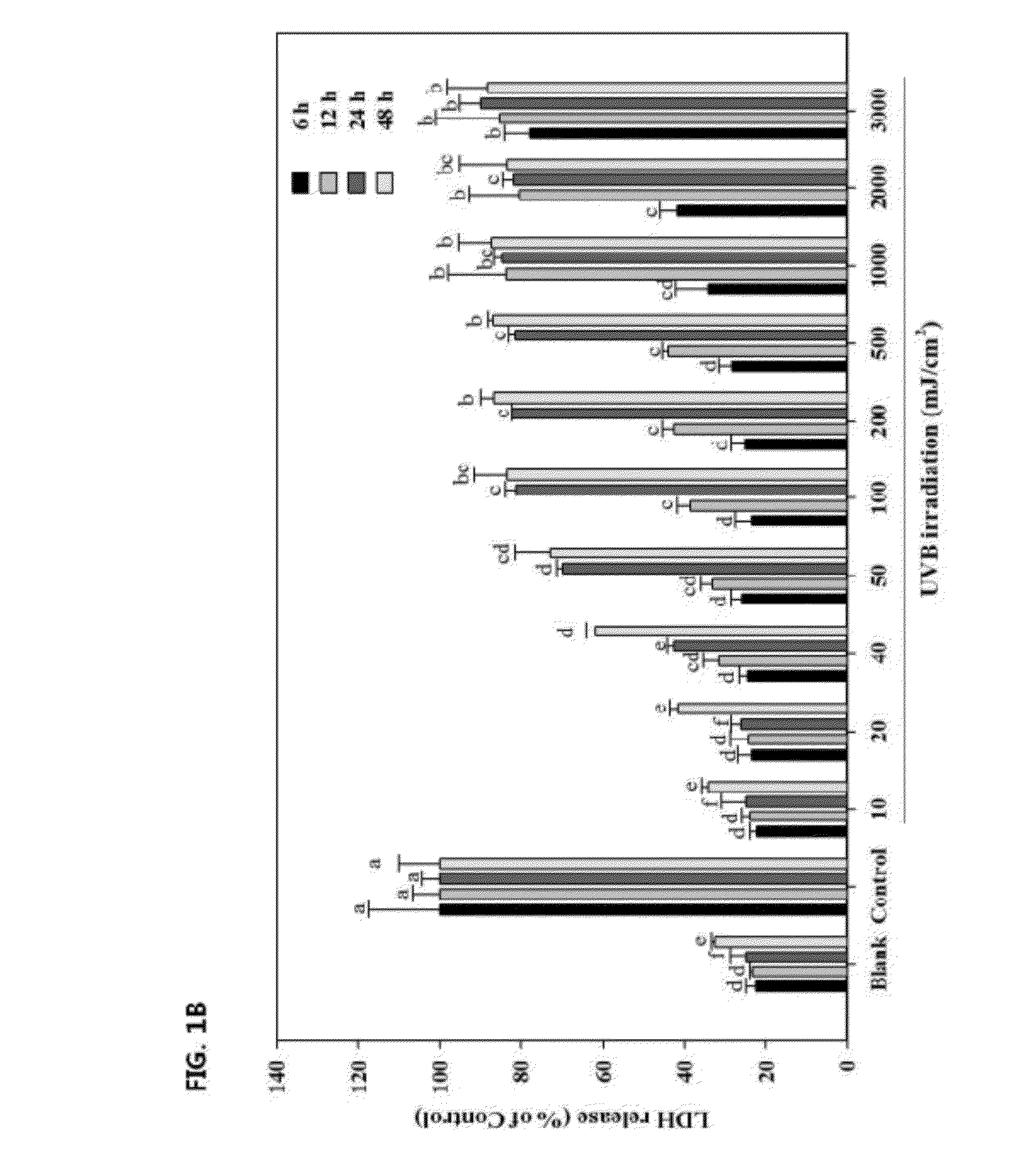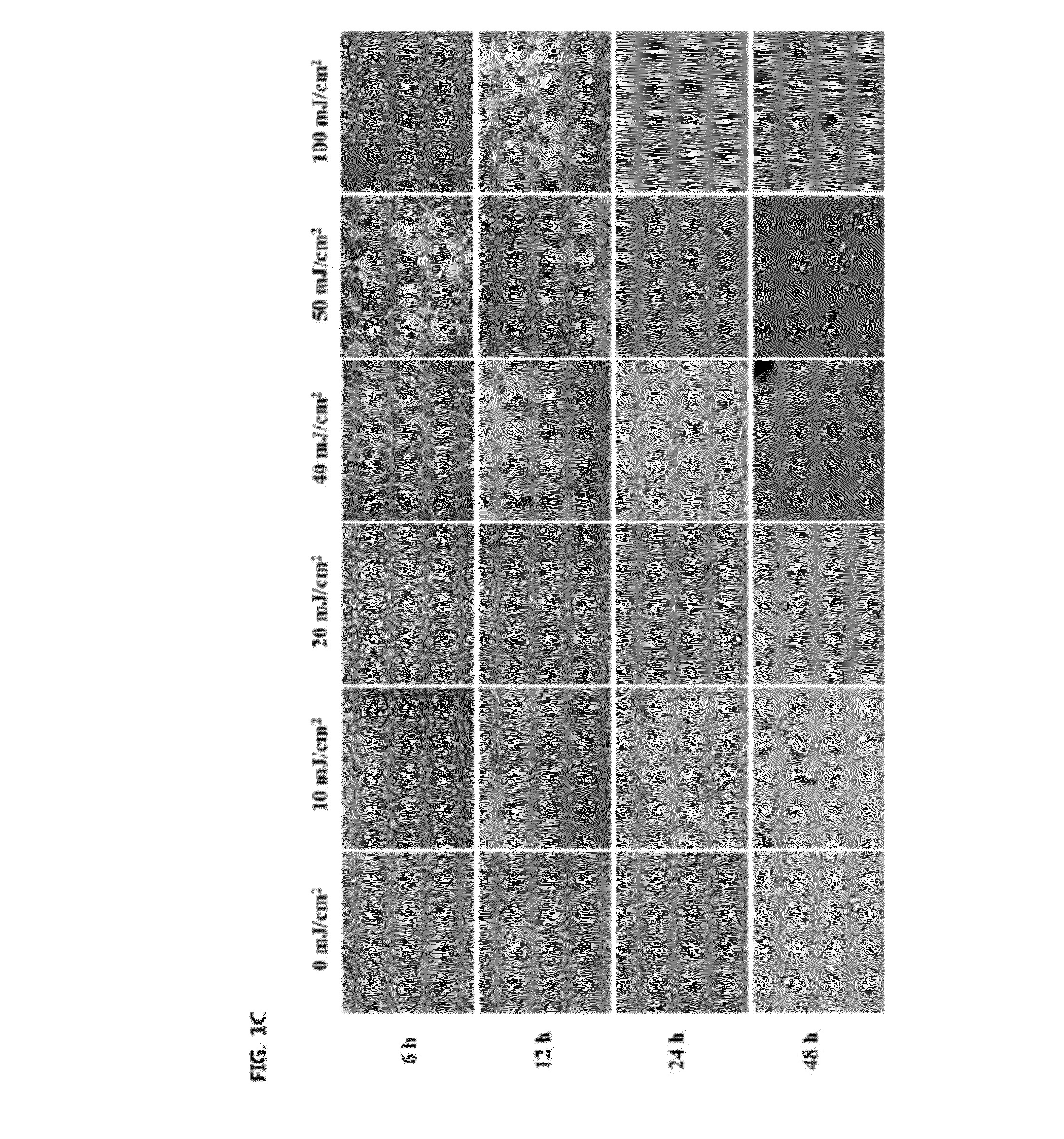(2's)-columbianetin isolated from corydalis heterocarpa and composition containing the same
a technology of corydalis heterocarpa and collagenetin, which is applied in the directions of organic chemistry, plant/algae/fungi/lichens ingredients, and osmotic acidity, etc., can solve the problems of destroying the ozone layer, causing significant skin damage, and inducing harmful biological effects both, so as to achieve high efficacy
- Summary
- Abstract
- Description
- Claims
- Application Information
AI Technical Summary
Benefits of technology
Problems solved by technology
Method used
Image
Examples
example 1
Plant Materials and Isolation of (2′S)-columbianetin
[0027]Whole plants of C. heterocarpa were collected in July, 2003 at Muando, Jeollanamdo, Korea. The samples were air-dried, chopped into small pieces, and extracted for 2 days with MeOH (3 L×2) and CH2Cl2 (3 L×2), respectively. The combined crude extracts (41.1 g) were evaporated under reduced pressure and partitioned to afford the n-hexane (7.3 g), 85% aqueous (aq.) MeOH (12.0 g), n-BuOH (4.3 g) and water (20.0 g). (2′S)-columbianetin was isolated from a portion of the 85% aq. MeOH fraction.
[0028]Six types of fractions were obtained from the above 85% MeOH fraction by using reverse phase chromatography (C18 reversed-phase vacuum flash chromatography). Among them, from the isolate of the fraction No. 1 using the solvent of CH2Cl2 containing 10% MeOH on Si gel, (2′S)-columbianetin (658.2 mg) was obtained as follows:
[0029](2′S)-columbianetin Amorphous white solid, mp. 160-163° C.; [α]25D+264° (c 1.1, MeOH); HREI-MS m / z 246.0892 (cal...
example 2
Cell Culture
[0030]Human keratinocyte (HaCaT, Korean Cell Line Bank, Seoul, Korea) cells were grown in Dulbecco's modified Eagle medium (DMEM, Gibco-BRL, Gaithersbrug, Md., USA) containing 10% fetal bovine serum (FBS), 2 mM glutamine and 100 μg / mL penicillin-streptomycin (Gibco-BRL, Gaithersbrug, Md., USA) at 37° C. humidified atmosphere of 5% CO2. Cells were sub-cultured to about 90-95% confluence by detaching with trypsin-EDTA solution.
example 3
Determination of Optimal UVB Irradiation Level
[0031]In order to determine the optimum level of UVB irradiation intensity, the cells were incubated at a density of 1×105 cells / well in 24-well plate with DMEM containing 10% FBS, 2 mM glutamine and 100 μg / mL penicillin-streptomycin at 37° C. humidified atmosphere of 5% CO2. After incubation for 24 h, the cells were exposed to UVB energy at a range of 10-3000 mJ / cm2 (312 nm UVB light source, Bio-Sun lamp, Vilber Lourmat, Marine, France) in 200 μL of phosphate buffered saline (PBS) in each well. After irradiation, the cells were placed in serum-free DMEM for 6, 12, 24 and 48 h.
PUM
| Property | Measurement | Unit |
|---|---|---|
| density | aaaaa | aaaaa |
| emission wavelength | aaaaa | aaaaa |
| excitation wavelength | aaaaa | aaaaa |
Abstract
Description
Claims
Application Information
 Login to View More
Login to View More - R&D
- Intellectual Property
- Life Sciences
- Materials
- Tech Scout
- Unparalleled Data Quality
- Higher Quality Content
- 60% Fewer Hallucinations
Browse by: Latest US Patents, China's latest patents, Technical Efficacy Thesaurus, Application Domain, Technology Topic, Popular Technical Reports.
© 2025 PatSnap. All rights reserved.Legal|Privacy policy|Modern Slavery Act Transparency Statement|Sitemap|About US| Contact US: help@patsnap.com



